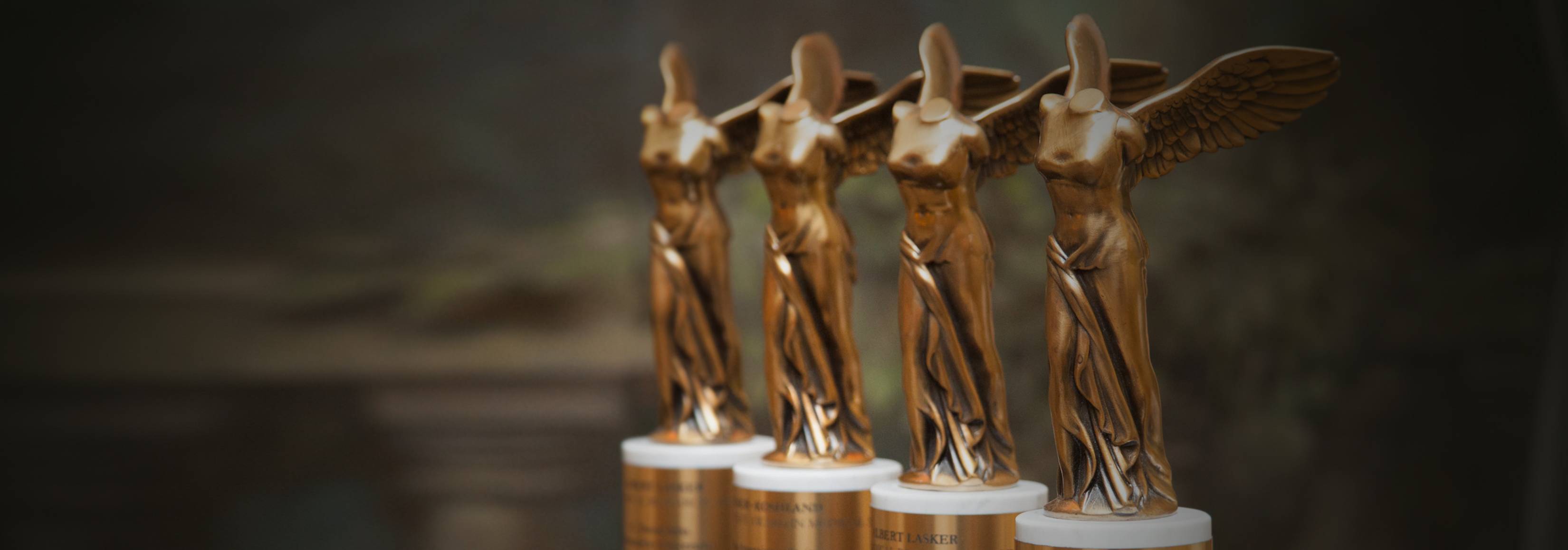Though the word “virus” has existed since 1898, the infectious agent it described was so mysterious to scientists that for many decades it was considered theoretical. Investigations from all points of the globe suggested its influence in numerous disease states. But proof of its capacities remained elusive until the 1930s, when Richard E. Shope, a physician at The Rockefeller Institute for Medical Research, connected a virus to one of the most devastating diseases of the 20th century — the influenza pandemic of 1918. For this and other fundamental discoveries of the workings of viruses, Dr. Shope was awarded the 1957 Albert Lasker Clinical Medical Research Award.
While the 1918 influenza pandemic was running its course in humans, a similar illness was felling the livestock of hog breeders in the midwestern United States. At the time, bacteria were considered the most likely source of the flu, and Dr. Shope began searching for a bacterial cause of the swine disease. He did locate a bacterium — Hemophilus influenzae suis — present in most cases, but surprisingly, the germ was incapable of reproducing the flu in healthy pigs. Following a hunch, Dr. Shope searched for and in 1933 found a virus also present in the tissues of diseased swine. Although the virus by itself produced only a mild trace of illness in inoculated pigs, Dr. Shope succeeded in reproducing the more severe disease when he injected both the virus and the bacterium together. The experiment not only proved that a virus can cause influenza, it also was the first demonstration of viral-bacterial cooperation in pathogenesis.
Controversially, Dr. Shope posited a connection between the swine and human influenzas, noting that a similar bacterium — Hemophilus influenzae — is often present in human flu cases. Examining the immunological profiles of people who had survived infection during the 1918 pandemic and those of people born after 1920, when the disease had ended, he noted that the former group had antibodies protecting them against the swine flu virus; the latter group did not, thus demonstrating that the 1918 human and swine flu viruses were at least very closely associated, if not one and the same. Encouraged by Dr. Shope’s findings in animals, researchers in England soon after discovered the first human flu virus.
Dr. Shope was also instrumental in developing the connection between viruses and cancer. Examining unusual growths commonly found on the paws of cottontail rabbits, he first confirmed the cause to be viral and then demonstrated that, though the growths were benign, the condition that caused them was merely a harmless version of a more virulent tumor-forming disease known as myxoma, and that infection with one results in immunity to the other. In 1932, Dr. Shope learned of another disease of wild cottontails that produces long, hornlike growths on the head and face of the animal. After confirming that the illness was virus-borne, Dr. Shope passed his finding along to Rockefeller colleague Peyton Rous, who two decades earlier was the first to demonstrate that a virus could cause cancer. Dr. Rous confirmed Dr. Shope’s suspicion that the cottontail warts were actually a benign cancer. The Shope papillomavirus, as it is now called, is purported to explain the tales of a creature mythologized in the Southwest and known as the jackalope.
In addition to enriching the scientific understanding of viruses, Dr. Shope’s work contributed to our ability to treat viral diseases. In 1942, he led a team that developed a successful vaccine, now used worldwide, against rinderpest, a highly infectious disease of European cattle that was a potential tool of biological warfare during World War II. Later war research efforts led Dr. Shope to discover antiviral properties in an antibiotic, the first demonstration of such crossover possibilities in antimicrobials, and the impetus for the development of some of today’s most innovative pharmaceuticals against infectious disease. Dr. Shope shared the 1957 Lasker Award with Pierre Deniker, Rustom Jal Vakil, Nathan Kline, Henri Laborit, Heinz Lehmann and Robert Noce.
CAREER
Born in Des Moines, Iowa, in 1901, the son of a physician, Dr. Shope received his medical degree in 1924 and became an instructor in pharmacology at the University of Iowa. By 1928 he had joined The Rockefeller Institute and had shifted his research focus from tuberculosis to hog cholera, beginning his illustrious career as a virologist. During World War II, he conducted research for both the United States Army and the Navy. Upon the closing of Rockefeller’s Princeton laboratories in 1947, Dr. Shope accepted a position as assistant director of the Merck Institute for Therapeutic Research, which he held until 1952, then returning to Rockefeller, to work on the New York campus. Dr. Shope was a member of the National Academy of Sciences and the American Philosophical Society. In addition to the Lasker Award, he received the Kober Medal from the Association of American Physicians and the U.S. Army Legion of Merit. He died in 1966.
